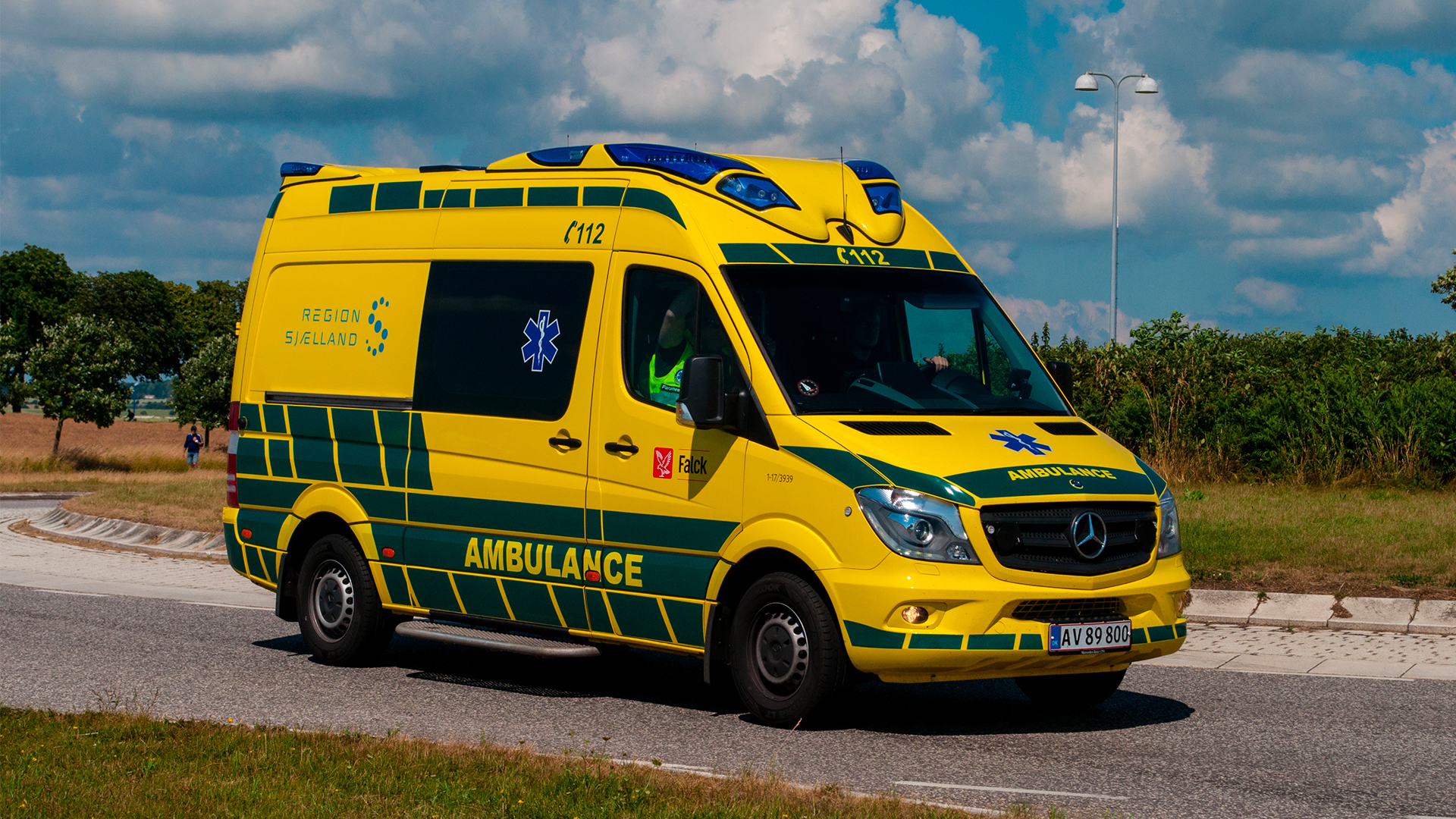Computer science students create solutions for paramedics
Nine students from the Department of Computer Science have followed paramedics, nurses, and doctors' cooperation in the Region of Zealand’s emergency response unit. Mixing theory and practice they prepared design proposals for Falck's IT systems. The students now look forward to seeing whether the ideas will make a difference.

Imagine that you were a paramedic. You hold a sick patient in your arms and have to make medical decisions in a short time. In these kinds of situations you would need all the information you can access, such as whether the patient has a chronic illness, allergies, or gone through medical treatment - and every second that you are not making a decision, you increase the risk of a fatal outcome.
Information is important for paramedics. A group of computer science students noted that in a recent collaboration between the Danish ambulance operator Falck and the Department of Computer Science at the University of Copenhagen. The group followed an emergency response unit in Region Zealand in connection with their master's course in collaborative computing.
- A decision that the doctor could have made in seconds, sometimes gets prolonged because they need to do a call and coordinate or clarify important information, says Benjamin Størup Olsen, a graduate student in computer science.
His fellow student Kirke Kjellberg adds that the same applies to the emergency rooms where the latest information from the accident site may be important to doctors, but sometimes is not easy to access:
- Though the paramedics have already written all the important information in the computer system called PPJ, doctors at the emergency rooms don’t access the system even though they have access. So the information is present, it just isn't being used.
Can smoothen communication
This was one of the findings, that the group of computer science students made when they researched general collaboration and the collaboration technologies used in the emergency response unit in Region Zealand. Altogether, nine students presented their results and design ideas for Falck Ambulance DK at the end of the course. The results identify the challenges in the emergency work, especially in connection with coordination between different bodies, e.g. ambulances and emergency rooms. The design ideas suggest how changes in technologies can help to better support the health care provider's collaboration.
The PPJ information system is just one example of an important system that the students proposed socio-technological improvements for. Today the system does not work as a collaborative system but is rather an “information collection system” that makes statistics on paramedics work. Both Benjamin Størup Olsen and Kirke Kjellberg saw the potential to make the IT system more collaborative. Among other things, it is important that the IT system provides the users with relevant up-to-date information when needed, and that the system works in a user-friendly way.
- If they follow our advice, then we are quite convinced that communication between the bodies can be more effective, says Kirke Kjellberg.
Successful collaboration
The students' research was well received by the collaborator Falck Ambulances DK.
- It has been very interesting working with students from DIKU and super interesting with a perspective on collaboration technologies. We look forward to continuing the collaboration to the best of both, says Jannie Lauersen, senior manager of Falck Ambulances DK.
Not only Falck Ambulance DK had a fruitful collaboration. For Benjamin Størup Olsen, the project has been so exciting he has chosen to continue working with Falck for his thesis.
- It has been interesting to work with Falck, and then it is cool to see that they move on with what we came up with, now I am looking forward to seeing if they can use it for something.
For Kirke Kjellberg, the project has been an eye-opener:
- It's just something else to be out and close to the users and see what their workflow is like in comparison to reading about it in a book. When you see how they use or do not use the technology, you understand the importance of listening to users as you develop.
And it is very important that the students experience professional collaboration because an in-depth understanding of work practice is important when designing collaboration systems, says Pernille Bjørn, who is a professor and teaches collaborative computing:
- The students we educate must design and make real IT systems for real people, and it is therefore important that the students can make complex systems that take into account, for example, different and complex work processes. The collaboration with Falck Ambulance DK has been a unique opportunity for the students' learning and experience of real future work assignments.
The successful research collaboration between DIKU and Falck Ambulance DK will continue with new projects in the future.
Related News
Contact
Pernille Bjørn
Professor
pernille.bjorn@di.ku.dk
+45 53 41 45 52
Jeppe Kanstrup Jørgensen
Communications consultant
jej@di.ku.dk
Tlf. +45 20 73 85 45
Collaborative Computing
The course in Collaborative Computing has two main focuses 1) to study collaboration and 2) to design collaborative technologies. Collaboration is everywhere and techniques and methods can be used for several domains including open source development, open hardware collaboration, healthcare, gaming, research & development etc.
